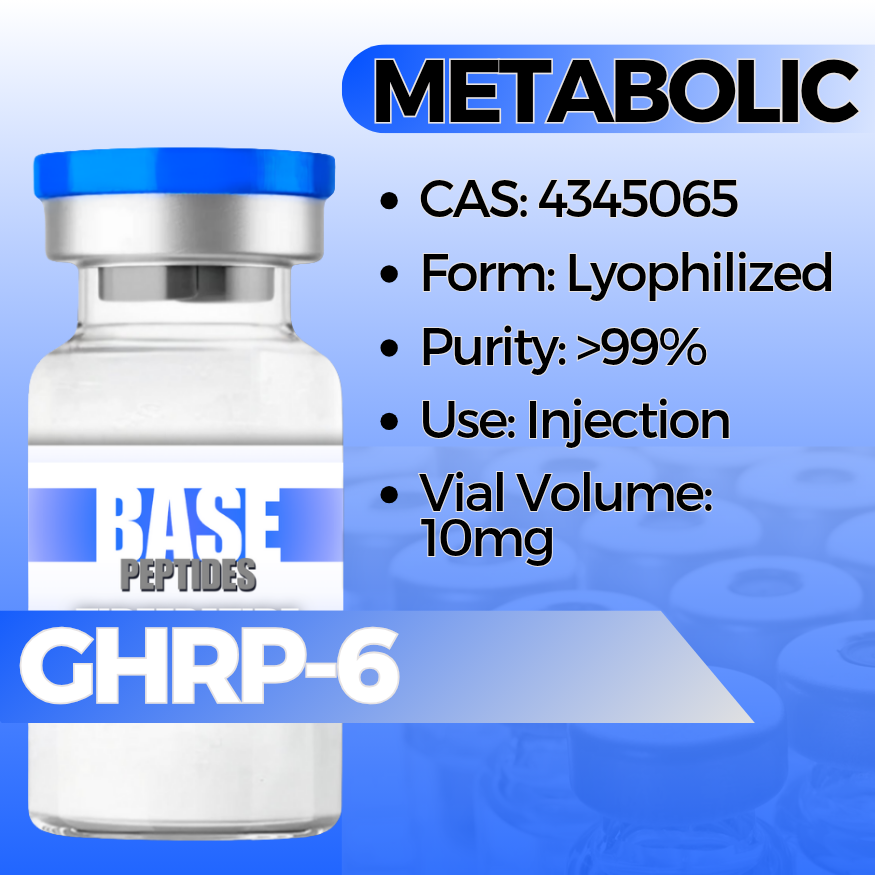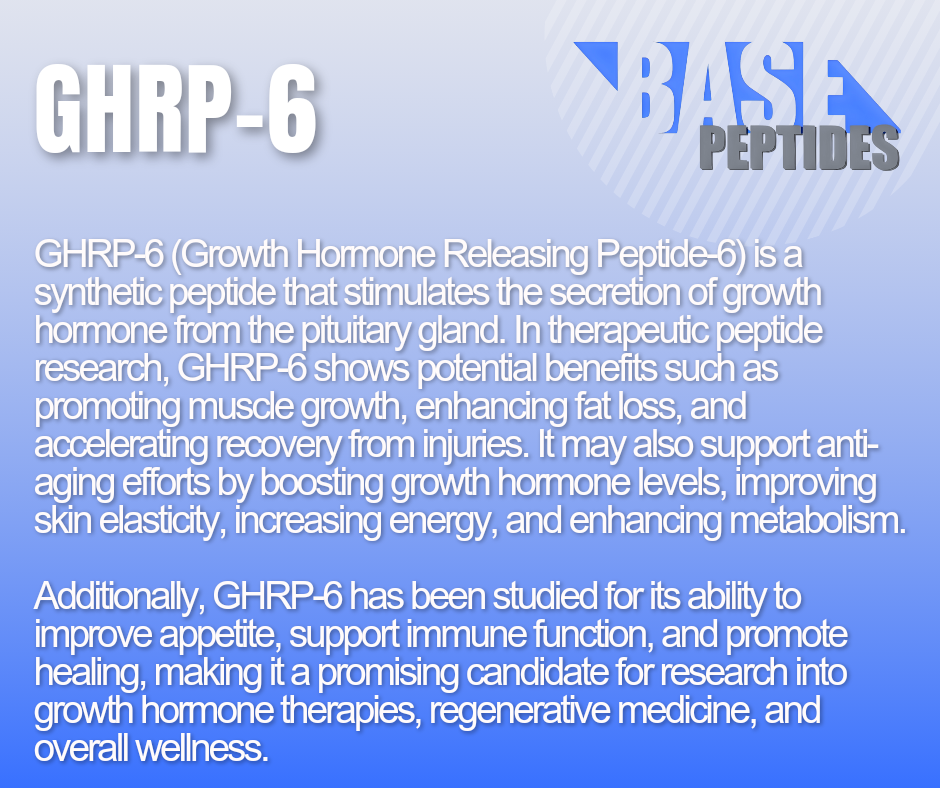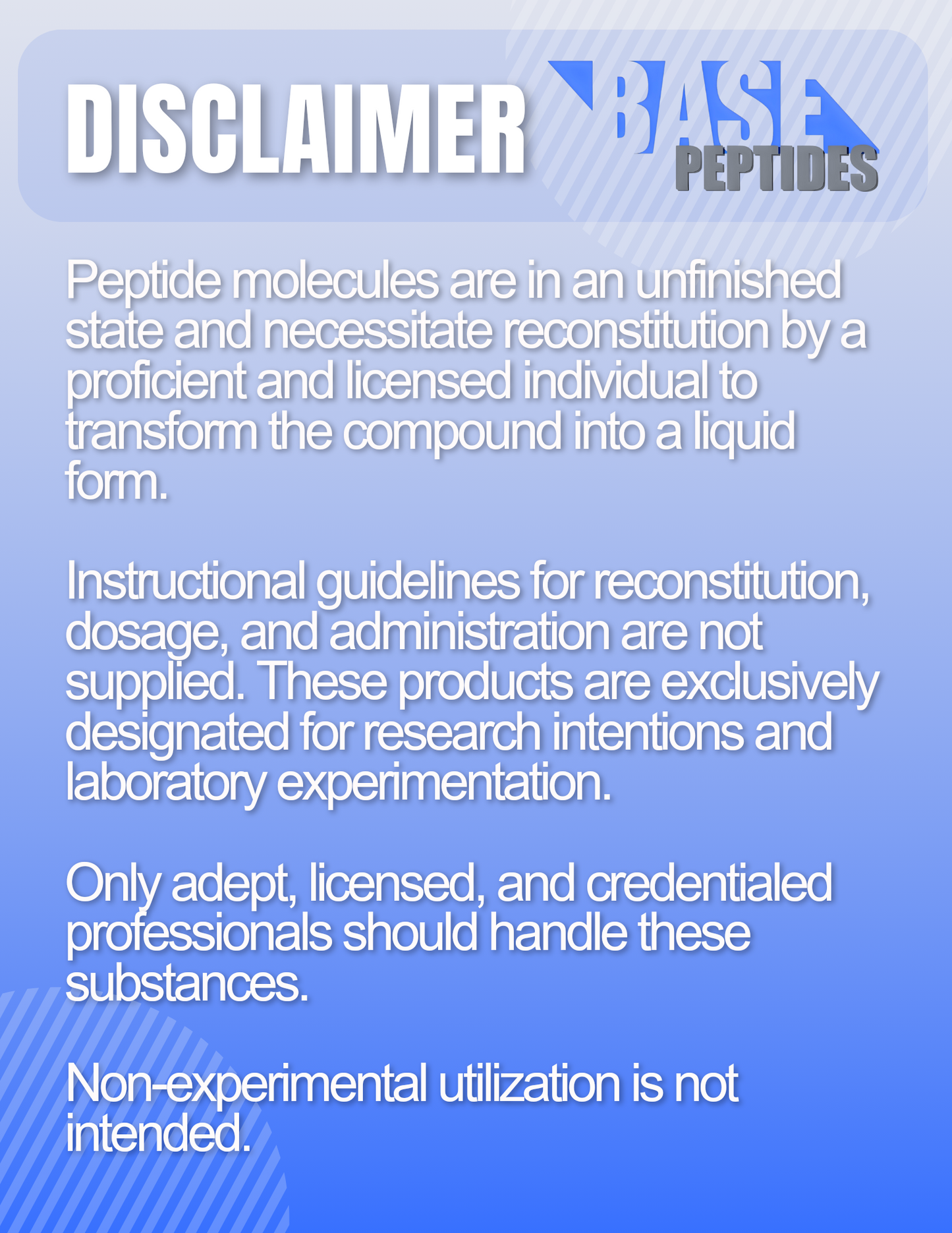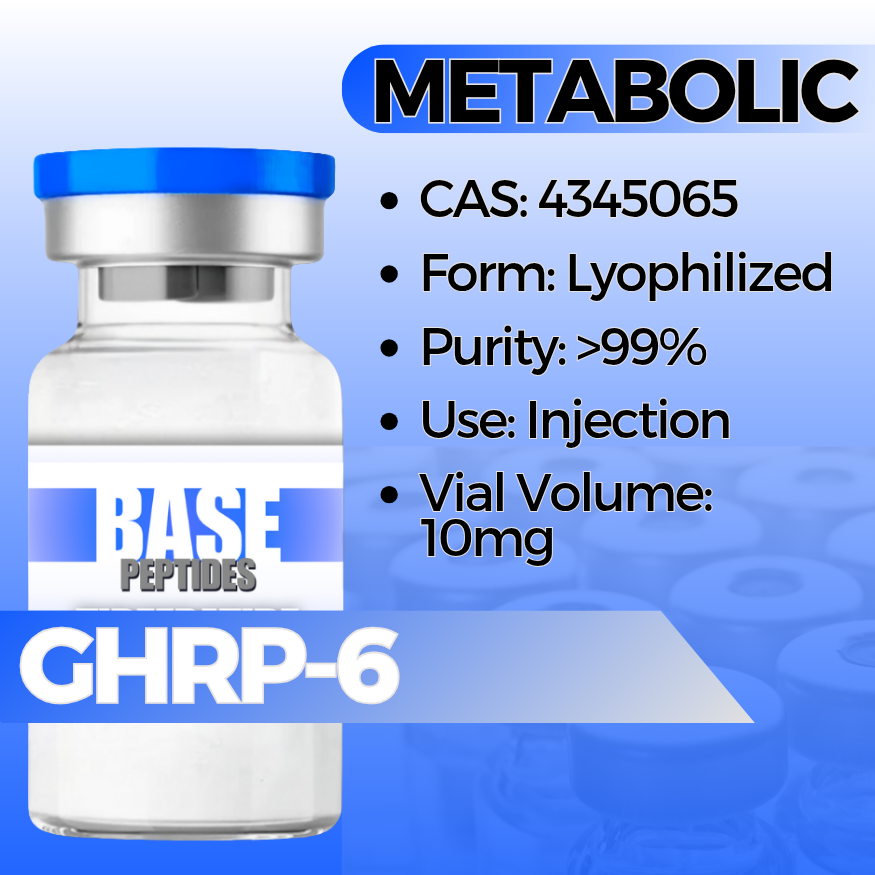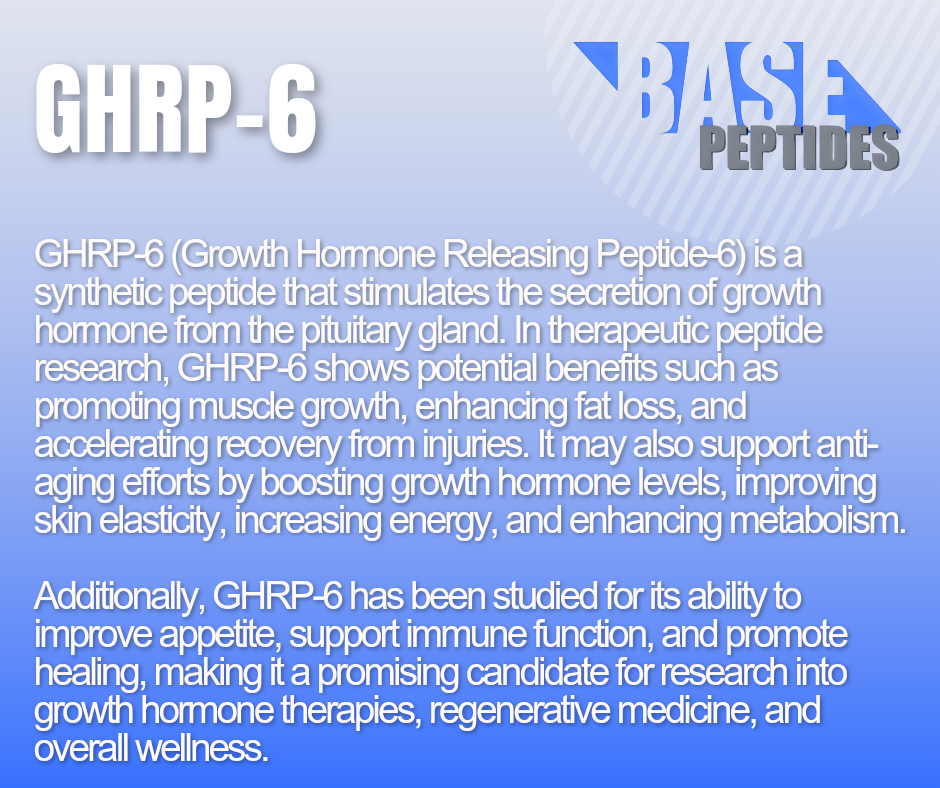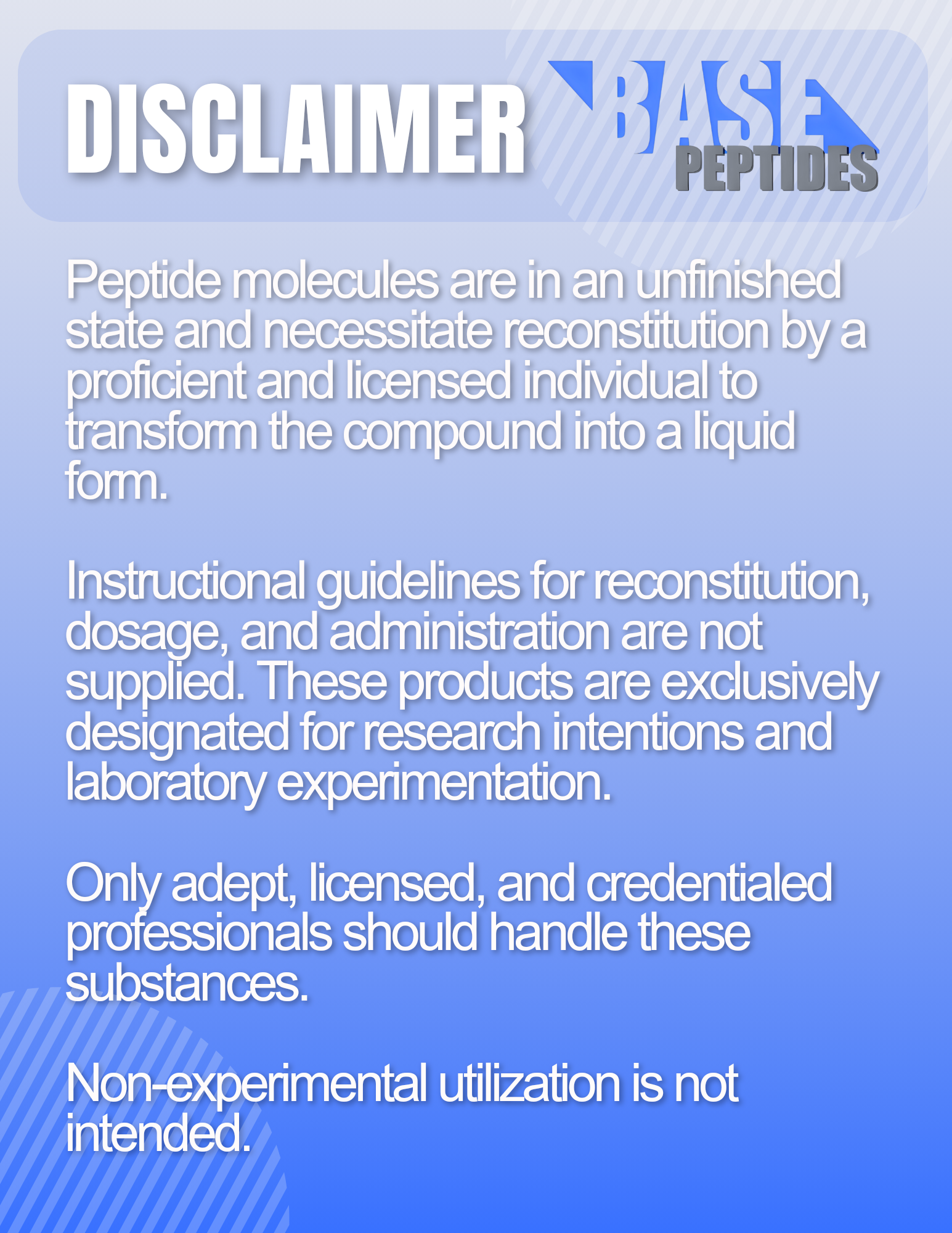GHRP-6
GHRP-6
Base Peptides are intended for licensed medical professionals and experienced researchers. Reconstitution required. Dosing and use instructions are not provided.
Regular price
$39.00
Regular price
Sale price
$39.00
Unit price
per
Shipping calculated at checkout.
Couldn't load pickup availability
GHRP-6 — Hexapeptide Ghrelin (GHSR-1a) Agonist
GHRP-6 is a synthetic growth-hormone secretagogue that activates the ghrelin receptor (GHSR-1a) on pituitary and hypothalamic targets. It’s widely used in research on GH pulsatility, appetite/feeding behavior, and endocrine feedback.
Identifiers
- Common names: GHRP-6; Growth Hormone Releasing Hexapeptide-6
- CAS: 87616-84-0 (salt forms may vary)
- Sequence (hexapeptide): His-D-Trp-Ala-Trp-D-Phe-Lys-NH2
- Approx. MW: ~873 Da (form-dependent)
How It Works (Plain English)
- Binding to GHSR-1a increases intracellular Ca2+ and stimulates growth hormone (GH) release.
- GHRP-6 also engages hypothalamic ghrelin pathways linked to appetite and orexigenic signaling.
- It acts on a different receptor than GHRH; co-use with a GHRH analogue can amplify GH pulses.
Why Researchers Use It
- To characterize GH pulse dynamics and endocrine feedback (deconvolution analyses).
- To probe ghrelin–appetite circuits and feeding behavior in translational models.
- To compare secretagogue selectivity vs GHRP-2 and Ipamorelin.
Key Study Themes — What’s Typically Tested
GH stimulation & sampling windows
- What’s tested: Serial GH draws after GHRP-6 exposure; ±GHRH analogue arm.
- What changes: Robust peak GH and AUC; dual-pathway designs often show higher peaks than single-agent arms.
- Why it matters: Models coordinated hypothalamic-pituitary control of GH release.
Appetite/orexigenic readouts
- What’s tested: Food-intake, meal-initiation, and hypothalamic marker panels.
- What changes: Increased feeding behavior in many models—useful for ghrelin-pathway mapping.
- Why it matters: Highlights a design caveat: appetite changes can confound body-composition endpoints.
Potential Research Applications
Endocrine Physiology
- GH pulse profiling & deconvolution
- Somatostatin tone / counter-regulation experiments
Feeding & Energy Balance
- Orexigenic signaling, meal patterns, hypothalamic circuits
- Metabolic readouts (glucose, lipids) under ghrelin activation
Comparative Pharmacology
- GHRP-6 vs GHRP-2 vs Ipamorelin selectivity and endocrine “cleanliness”
- GHSR-1a desensitization/tachyphylaxis studies
Synergistic / Comparator Peptides
CJC-1295 (±DAC)
- Why pair: Activates the GHRH receptor; dual input typically yields larger GH pulses.
- Angle: Compare short-acting (no-DAC) vs extended (DAC) exposure with the same GHRP-6 pulse.
Ipamorelin
- Why compare: Often considered more selective (less PRL/cortisol spillover) than classic GHRPs.
- Angle: Endocrine panel (GH, IGF-1, PRL, cortisol) head-to-head.
MOTS-c
- Why pair: Mitochondrial-metabolism peptide for energy-side endpoints alongside GH/IGF-1.
Known Concerns (Context)
- Orexigenic effects: Appetite increases can confound weight/body-composition outcomes—control diet tightly.
- Broader endocrine response: Compared with Ipamorelin, some models report more prolactin/cortisol co-stimulation.
- Desensitization: High-frequency exposure may blunt GH responsiveness; schedule recovery periods.
- General: For laboratory research use only; not for human consumption or therapeutic use.
Specifications & Handling
- Form: Lyophilized powder (lot-coded)
- Purity: ≥ 98–99% (HPLC/MS verified)
- Storage: ≤ −20 °C; protect from light/moisture
- In solution: Prepare fresh aliquots; avoid repeat freeze–thaw; record vehicle and pH
- Packaging: Tamper-evident; research-only labeling
Regulatory & Use Notice
Sold for laboratory research use only. Not for human consumption, medical, or veterinary use. No human-use instructions are provided. Buyer is responsible for safe handling and regulatory compliance.
GHRP-6 Research Peptide | Ghrelin (GHSR-1a) Agonist | GH Pulsatility, Appetite & Endocrine Pathway Studies
